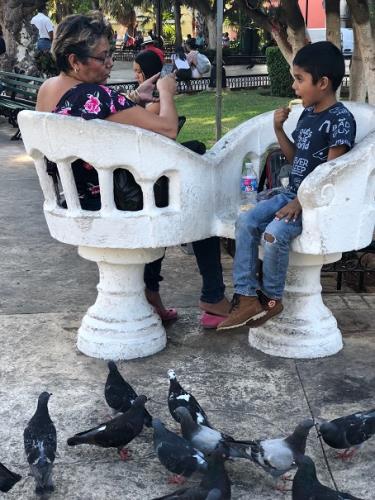Yap loves design, travel and everything beautiful in life. He writes for various media about travel and design and has published works, including Wander Bhutan and Myanmar Odyssey. Formerly publisher of Lonely Planet (China Office), Yap is now Chief Content Officer of Youpu Apps, a Beijing based travel app company.

We particularly focus on designs when travelling. Beautiful store or architecture attracts us to take a second look. Gradually, we realise that this world doesn’t need so many designs, which are magnificent and aim to stimulate consumption. If they can’t improve life, various designed chairs and cups are wasting resources actually and just turn designers into "desire producers".
Thus, I prefer to pay more attention to the daily design, like city’s public furniture, signs in subway, etc. These designs could get in touch with the public and be used by the public. Indeed, good designs could improve the qualities of resident’s life. Funny public design could not only be accepted and used by public but also could leave travellers with deep impressions.
Merida, the capital of Yucatan Peninsula in Mexico, is a small city with great Spanish flavour. It has numerous squares and beautiful colonial architectures. The small garden in the middle of the square is the good place to relax for local people. Buskers often perform there and the peddlers sell different kind of snacks and toys. The Independent Square located at the city centre is the most beautiful square in Merida. It is surrounded by a circle of historical old houses and churches. The day I visited Merida happened to have a Light Festival. Gorgeous light and patterns were casted on an old wall, which like telling the long history of this city. But what caught my attention was the design of the local public chair. These white chairs had poetic name and played the roles of local people’s pets. Their names are “sillas tu y yo”, which means “you and me chairs”. People could sit on the chair face to face. The handrails of the chair are combined, enabling the intimate touch of people. Therefore, they are popular among lovers. They were put there by wise decision maker and now become the symbol of the city. These chairs are also magnified into sculptures and minified into souvenirs. Travellers could take photos or take them home. If a city would like to promote love and fertility, this design could be considered.
These life-style designs, actually, reveal the tastes of local people and historical culture, etc. In order to experience how local people live, local transportation could not be missed.
Why Tokyo could be a top city? If you take the subway at rush hour, you could find the answer. Although there are huge crowds, they are still in order. People could be effectively evacuated and separated. Except for the Japanese characteristic of behaving themselves, designs must be counted, like clear signs. The typeface, spacing, colour and size must have been considered. There is a funny picture of train on the platform which clearly indicates which carriage would be nearest to switching station and stair of the exit. Those who are in hurry will know which carriage they should choose.
Later I travelled to Mexico and realised that Mexico was selected as the city of design this year. This big American city will hold various activities and chooses pink as the city colour. Even the cabs are painted in pink as well as the trash cans and the uniform of the street cleaners. Undoubtedly, it could be more easily to have the distinguishable impression toward this city.
Recent year, the economy of Mexico has developed rapidly. Thus, this city is full of various beautiful and modern buildings, among which Museo Soumaya grabs the most attention. It has weird shape and is just like the airship of alien. There are 16,000 aluminium sheets in the architecture, which are shining under the sun. In fact, Mexico has long history of design tradition. Universidad Nacional Autonoma de Mexico, built in the 60s, was listed as a world natural heritage site by the United Nations. Although its design style is modern, it shows the cultural consciousness of Mexico through details.
Mexico city is huge with 20 million populations. When people go there, only taking subway could they avoid the notorious transportation. The metro ticket price might be the cheapest in the world. No matter how far, it only costs SGD30 cents (that makes around MOP2). I discovered that the route design in the carriage was different from other cities; the place names combine with local landmark icons. For travellers, it might be more direct. It is creativity and courage making it different from others.